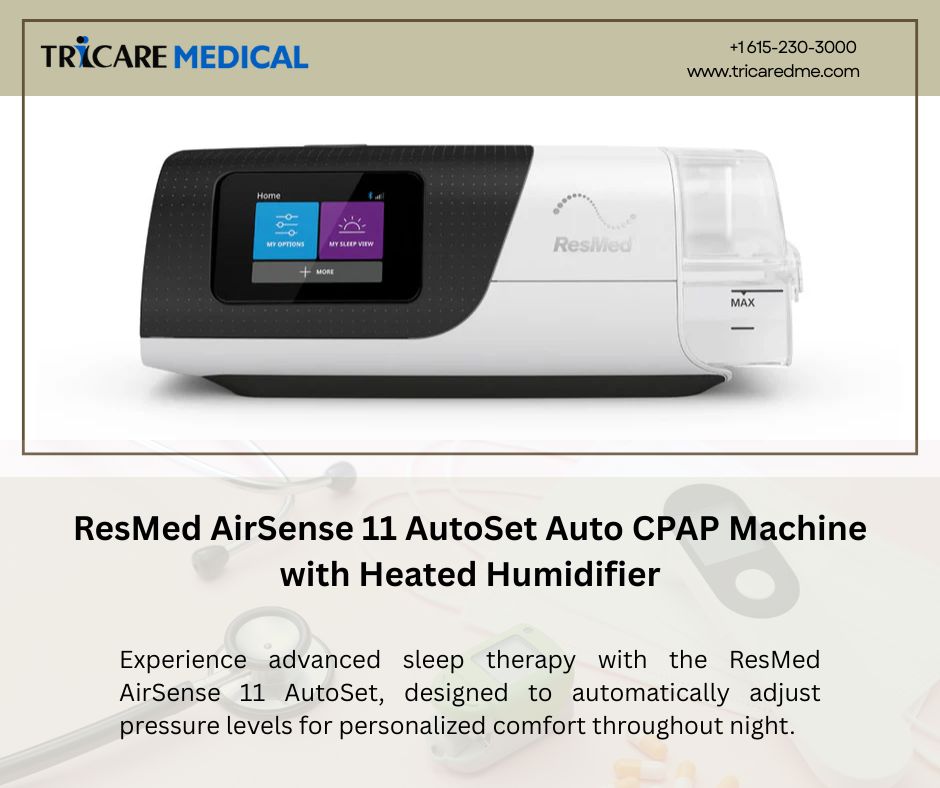The Comprehensive Guide to CPAP Supplies: Everything You Need to Know
- 4 min reading time
If you're in need of CPAP supplies, it's important to have a good understanding of what they are, how they work, and which ones you need to use in order to ensure that your CPAP therapy is as effective as possible. This comprehensive guide will provide you with all the details you need to know about CPAP supplies.

Firstly, let's begin by discussing what a CPAP machine is. CPAP (Continuous Positive Airway Pressure) machines are medical devices used to treat sleep apnea, a condition that causes breathing difficulties during sleep. CPAP therapy involves using a machine that delivers a continuous stream of air to keep the airway open, and CPAP supplies refer to the various items needed to use the machine properly.

The most important CPAP supply is the mask, which is available in different styles and sizes to fit different individuals. Nasal masks, full-face masks, and nasal pillow masks are the three main types of CPAP masks.
Nasal masks cover only the nose, while full-face masks cover both the nose and mouth, and nasal pillow masks use small cushions that sit under the nostrils. It's important to choose a mask that fits properly and is comfortable to wear throughout the night, as an ill-fitting mask can lead to discomfort, leaks, and ineffective therapy.
Headgear is an important part of using a CPAP mask. It helps to keep the mask in place during sleep, preventing it from slipping or moving around. Headgear comes in different sizes and styles, and some masks may have specific headgear that is designed to work with that particular mask. It's important to adjust the headgear properly to ensure that the mask fits securely and comfortably.
Cushions are another essential part of a CPAP mask. They are the part of the mask that touches your face, and they help to create a seal between the mask and your skin. Cushions come in different sizes and materials, and it's important to choose one that fits properly and doesn't cause any irritation or discomfort.
Chinstraps are another CPAP supply that some people may need to use. They are designed to help keep the mouth closed during sleep, which can be helpful for people who use a nasal mask or nasal pillow mask but have a tendency to breathe through their mouth. Chinstraps come in different styles and materials, and it's important to choose one that fits properly and is comfortable to wear.
Another essential CPAP supply is the tubing, which connects the mask to the CPAP machine. CPAP tubing comes in different lengths and materials, and it's important to choose one that is compatible with your machine and fits comfortably without creating any pressure points.
Filters are another important component of CPAP therapy. These help to clean the air that's being breathed in by capturing allergens, dust, and other particles. Depending on the type of filter, it may need to be replaced anywhere from every two weeks to every six months.

Humidifiers are also commonly used with CPAP machines to add moisture to the air, which can help prevent dryness, irritation, and nasal congestion. Heated humidifiers are the most effective type and can help alleviate symptoms such as a dry throat, dry mouth, and nasal congestion.
In addition to these supplies, there are also a variety of accessories that can be helpful for CPAP users. For example, travel bags can be useful for people who need to transport their CPAP machine, and mask wipes can be helpful for cleaning and maintaining the mask. There are also specialty pillows and mattress toppers designed to accommodate CPAP users, which can help to improve comfort and reduce mask leaks.
Finally, it's important to replace your CPAP supplies regularly to ensure optimal performance and prevent potential health risks (Read our blog post on CPAP Equipment maintenance to know more). Depending on the manufacturer's instructions, masks should be replaced every 3-6 months, while other supplies such as filters and tubing should be replaced more frequently.
In summary, understanding the different types of CPAP supplies and how they work is essential to ensure that your CPAP therapy is as effective as possible. By choosing the right mask, tubing, filter, and humidifier, and replacing them regularly, you can ensure that your CPAP therapy is working optimally to improve your sleep quality and overall health.



